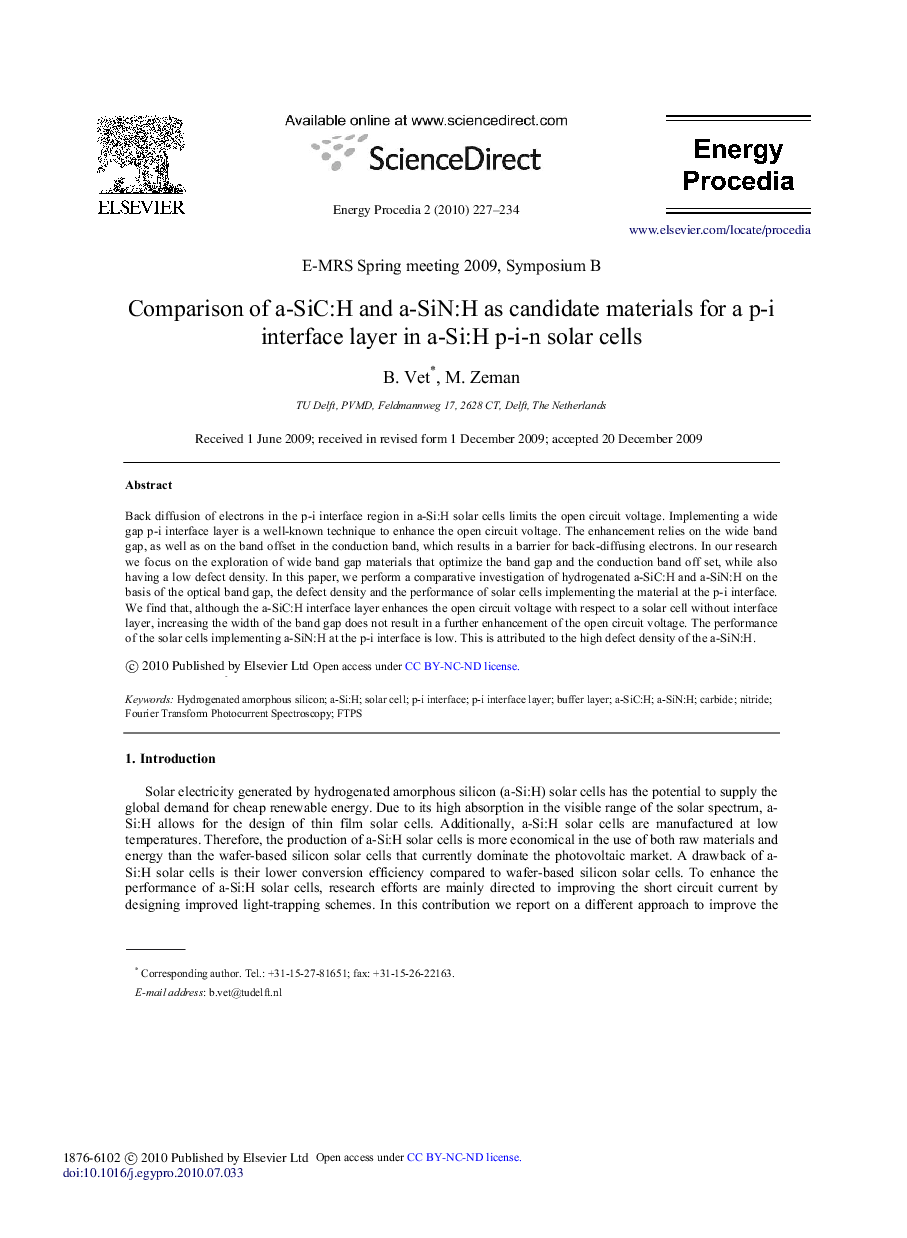| Article ID | Journal | Published Year | Pages | File Type |
|---|---|---|---|---|
| 1515096 | Energy Procedia | 2010 | 8 Pages |
Back diffusion of electrons in the p-i interface region in a-Si:H solar cells limits the open circuit voltage. Implementing a wide gap p-i interface layer is a well-known technique to enhance the open circuit voltage. The enhancement relies on the wide band gap, as well as on the band offset in the conduction band, which results in a barrier for back-diffusing electrons. In our research we focus on the exploration of wide band gap materials that optimize the band gap and the conduction band off set, while also having a low defect density. In this paper, we perform a comparative investigation of hydrogenated a-SiC:H and a-SiN:H on the basis of the optical band gap, the defect density and the performance of solar cells implementing the material at the p-i interface. We find that, although the a-SiC:H interface layer enhances the open circuit voltage with respect to a solar cell without interface layer, increasing the width of the band gap does not result in a further enhancement of the open circuit voltage. The performance of the solar cells implementing a-SiN:H at the p-i interface is low. This is attributed to the high defect density of the a-SiN:H.
